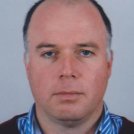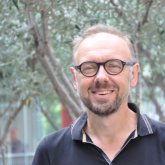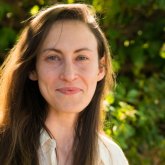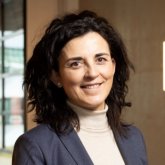Postdoctoral position: ARTEMIS: Advanced Research on Tissue Engineering Models for Inflammatory joint diseases
University of Twente’s Technical Medical Centre is widely recognized for its excellence in development of new biomedical solutions to address important biomedical challenges. Here, various Departments work on pressing topics with high societal and biomedical relevance such as osteoarthritis. The Developmental BioEngineering department (https://www.utwente.nl/en/tnw/dbe/) is currently recruiting 2 postdocs in recently granted programs focusing on developing and testing dearly needed joint on chip models for osteoarthritis.
Inflammatory joint diseases are amongst the most prevalent chronic joint diseases and cause irreversible joint damage if insufficiently treated. Rheumatoid Arthritis (RA), Spondyloarthritis (SpA) and osteoarthritis (OA) are the most prevalent leading causes of mobility associated disability and are all associated by distinct levels of synovial inflammation and related changes in cartilage and bone. Despite tremendous improvement in clinical practice over the past 20 years, these diseases cannot be cured, and many patients do not respond adequately to available treatments. There is a pressing need for novel disease modifying treatments. At present anti-rheumatic drug development still relies on simplified in vitro model systems and on animal models that do not accurately predict clinical responses in humans, likely due to differences between human and rodent biology. Furthermore, preclinical in vivo arthritis models can be severe and cause substantial discomfort for the animals. Hence, there is an urgent need for better predictive models to replace less informative in vitro and animal models for studying various forms of arthritis, as well as for testing disease-modifying drugs. In their successfully concluded phase 1 Create2Solve programs Amsterdam UMC and the University of Glasgow in collaboration with AstraZenica have developed 3D synovial tissue models that replicate RA pathology, while the University of Twente and Chiron engineered and validated a human cartilage-on-chip model that simulates mechanical stimulation ready for market introduction.
Building upon the proof of principles obtained in their phase 1 programs the consortia led by Amsterdam UMC and University of Twente have decided to join forces to engineer and validate the next generation of arthritis models; the joint-on-chip.
To achieve this the human 3D organoid models of synovial inflammation and cartilage-on-chip model developed in phase 1 will be refined and extended with a bone compartment and subsequently combined in a joint-on-chip. This model is intended to recapitulate key aspects of pathology associated with the indicated forms of arthritis. The envisioned model mimics the complex cell-tissues interactions, including mechanical loading effects on synovial inflammation and bidirectional effects in a dual synovial and osteochondral unit system (i.e. invasive growth of synovial tissue/pannus into the osteochondral unit and/or differentiation of osteoclasts from monocytes, and stimulation of synovial inflammation by cartilage degradation products). We will engineer and use individual synovial membrane and osteochondral unit-on-chip models as well as a their combination in the joint-on-chip to test established and new disease modifying agents to validate their use in drug screening and development programs.
We aim at establishing our models as the new standard for pre-clinical application in drug development for rheumatic diseases. Market surveys with potential customers from academia and the pharmaceutical industry conducted by project partner Chiron confirm strong interest in adopting the joint-on-chip models developed in this project for drug research and development. This is substantiated by the continued interest and participation of AstraZeneca.
The consortium consists of world-wide academic front runners (Amsterdam UMC, University of Twente, University of Glasgow) in the development of human model systems mimicking inflammatory joint diseases. The innovative design of the cartilage/bone-on-chip model has been patented and the technology is licensed to the spin off company Chiron B.V., which aims to market the joint-on-chip system as an alternative for animal testing. Proof of concept demonstration in drug testing for rheumatic diseases by project partner AstraZeneca will facilitate successful market introduction in academic and industrial drug research and development programs, which will directly contribute to a reduction in the use of animal models for arthritis.
Information and application
Please send your application via the ‘Apply now’ button, and include:
- A motivation letter describing why you apply for this position and for which of the three positions you are applying
- A description of your research interests
- A detailed CV
- Academic transcripts from your Bachelor’s and Master’s degrees.
- Contact information (incl. email address) of at least two references who are willing to send a letter of recommendation on your behalf.
About the organisation
The Faculty of Science & Technology (Technische Natuurwetenschappen, TNW) engages some 700 staff members and 2000 students in education and research on the cutting edge of chemical technology, applied physics and biomedical technology. Our fields of application include sustainable energy, process technology and materials science, nanotechnology and technical medicine. As part of a people-first tech university that aims to shape society, individuals and connections, our faculty works together intensively with industrial partners and researchers in the Netherlands and abroad, and conducts extensive research for external commissioning parties and funders. Our research has a high profile both in the Netherlands and internationally and is strengthened by the many young researchers working on innovative projects with as doctoral candidates and post-docs. It has been accommodated in three multidisciplinary UT research institutes: Mesa+ Institute, TechMed Centre and Digital Society Institute.





